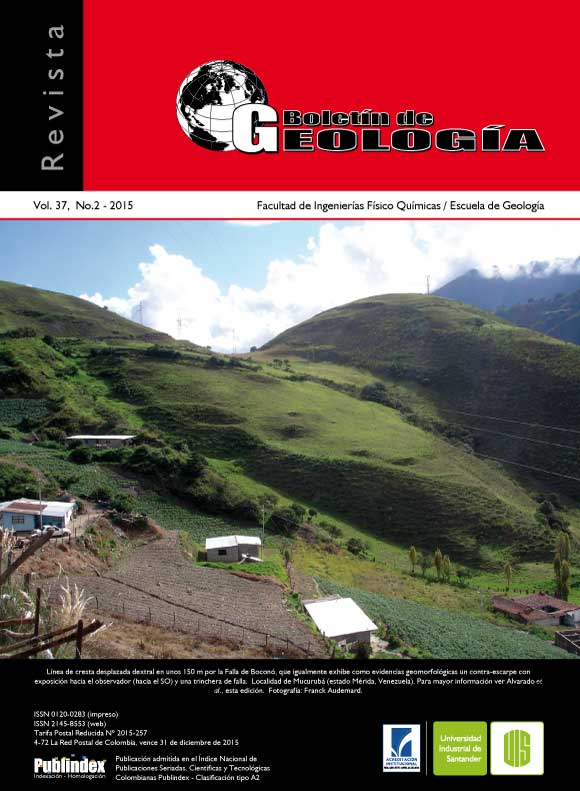GAS RADON MEASUREMENTS ALONG A SEGMENT OF THE BOCONÓ FAULT IN THE MERIDA ANDES
Published 2015-02-18
Keywords
- Radon gas,
- Boconó Fault
How to Cite
Abstract
A survey of total radon soil gas have been accomplished on the Boconó fault in the Merida Andes, where a segment of this active fault of ~170 km long, between the city of La Grita, in the Táchira state, and the Santo Domingo village, in Mérida state, was considered. Measurements of soil gas were taken along traverse lines perpendicular to the trace using a portable radiation monitor. The aim of this work is to characterize the diverse provinces traversed by this active fault, as well as, to evaluate the response of the method in different geological – geomorphological site conditions such as fault scarps, shutter ridges, saddles, trenches, sag ponds, depressions, landslides and an offset moraine. Along the fault trace, 36 profiles were taken and the results indicate that in 40 percent of the transects the trace was weakly detected, or not detected; the best results are in saddles and hillsides, the worst in scarps and shutter ridges. This suggests that, leaving aside the meteorological conditions, geology and geomorphology are important factors for keeping in mind when this method is applied. The relative concentration of total radon found is highest in the Mocotíes zone (Tovar – Estánques) and it is lowest in the páramo de Mucuchíes.
